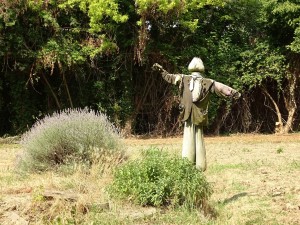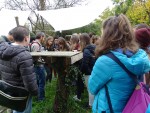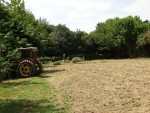La Campagna entro le Mura
La Campagna entro le Mura – “the countryside within the walls” – is an area of around four hectares in the north-east of the city, at the crossroads of Via delle Erbe and Via delle Vigne.
La Campagna entro le Mura
Looking at a map of the city, you will notice a large green area in the north east, in the renaissance area, which is known as the Campagna entro le Mura, or countryside within the walls, featuring around four hectares of fields, vegetable gardens and ornamental gardens. This area, located between the Jewish Cemetery and La Certosa, is owned by the municipality of Ferrara and managed by farms and associations by agreement. As well as adopting cultivation techniques which minimise the environmental impact and preserve biodiversity, the managers put on summer camps for children and teenagers, as well as other recreational and educational activities.
The area is served by cycle paths connected to those of the Walls.
If the Campagna entro le Mura is considered together with the other neighbouring green spaces, public and private, in that quadrant of the city delimited by Corso Ercole I d’Este, Corso Porta Mare and by the city walls, there is a total of around 55 hectares of minimally urbanised space with extensive grass and plenty of trees.
The Birth of the Area
Over the course of its history, Ferrara has evolved in accordance with the needs of its citizens and the House of Este, through urban planning processes known as Addizioni, or additions. The most famous and significant of these was the Addizione Erculea, work which began in the late 15th century on the orders of Ercole I d’Este to expand the perimeter of the city, which was by then overcrowded, and at the same time fortify its defences. Biagio Rossetti, the architect behind the Addizione Erculea, developed a new urban plan to adapt to the mediaeval city; the result was an innovative course of works which included drainage, irrigation and town planning aspects. Work began in 1492 and concluded in 1510. Biagio Rossetti's design allowed an urbanised area of countryside to be created within the walls, and the development of ornamental and vegetable gardens, as outlined by Orazio della Renna in his Relazione dello Stato di Ferrara (state of Ferrara report) in 1589. The purpose of this was to ensure that the city was self sufficient if it should come under siege.
This area has been preserved for over 500 years, and in 1987 the Municipality of Ferrara intervened by purchasing the land to ensure it could not be developed; the goal was, and still is, to keep the green area free of construction and allow for public access.
Bibliography
Fototeca
Compiling entity
- Museo Civico di Storia Naturale di Ferrara



